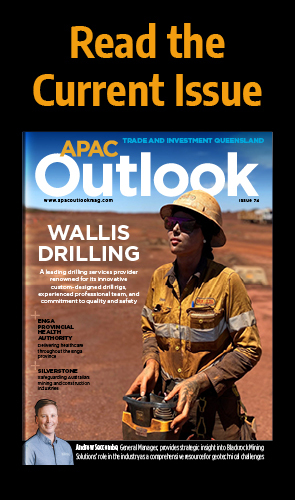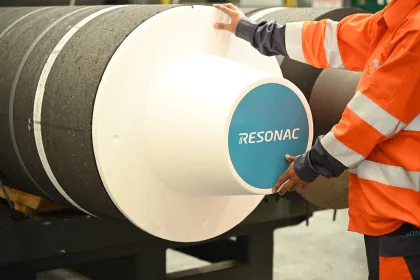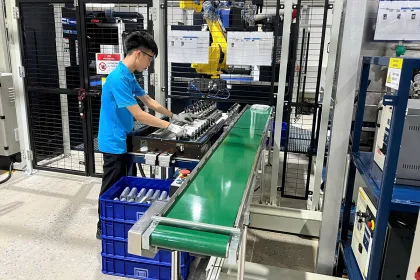Smart cities in Australia and New Zealand are pioneering innovative technologies to improve sustainability, quality of life and urban resilience.
Earlier this year, the world watched in horror as Australia’s summer bushfires raged uncontrollably, ultimately destroying around 5.8 million hectares of broadleaf forest in Victoria and New South Wales (around 21 percent of the nation’s forested areas).
Some people living in nearby towns struggled to evacuate due to smoke haze obscuring exit roads. There were shortages of fuel and food, as well as communications difficulties. For many inhabitants, the bushfires highlighted the fragility of their communities and the danger of the surrounding environment.
The world is becoming increasingly volatile – temperatures are soaring, sea levels are rising, and unpredictable weather events are becoming more common. But it is not just environmental factors which will affect our cities and landscapes – human factors must also be taken into consideration.
For example, the Australian Bureau of Statistics forecasts that Australia will have a population of 62.2 million by 2101 (it currently stands at 30.37 million). According to research by Richard Weller and Julian Bolleter, many of Australia’s planning documents go no further than 2030, and collectively only account for another 5.5 million people.
Meanwhile, New Zealand is also experiencing population growth, thanks to a significant increase in immigration over the past decade. Between 2013 and 2018 net gain from migration was 270,000 people – a significant number when you consider New Zealand has a population of 4.82 million. The population spread is becoming increasingly uneven, with many flocking to the cities in the North Island, while villages in the South Island are becoming increasingly underpopulated.
These interconnected environmental and human challenges make it apparent that urban planning needs to be both responsive and futureproof. It is for this reason that we need smart cities.
DEFINING SMART CITIES
Smart cities involve the effective integration of digital, physical and human systems in the built environment to improve residents’ quality of life, ensure environmental sustainability, and make cities more liveable, resilient and responsive to challenges.
Such processes are heavily reliant on technology such as the Internet of Things (IoT). IBM defines a smart city as “one that makes optimal use of all the interconnected information available today to better understand and control its operations and optimise the use of limited resources”.
It is also important to understand that a smart city is not an end goal – it is a continual, dynamic process. Smart cities rely on IoT devices and sensors to gather and analyse information across various infrastructures. The information gathered can enable city authorities to improve transportation, reduce costs and increase efficiencies.
When it comes to smart cities, there is no “one size fits all” approach – each urban location experiences its own unique challenges and must respond accordingly.
PERTH, AUSTRALIA
The International Data Corporation (IDC) recently announced the 2020 winners of its IDC Smart City Asia Pacific Awards. The Australian city of Perth was joint winner of the ‘Civic Engagement’ Award for its Collaboration Market Place platform.
The platform has been designed as a space for citizens, researchers and interest groups to exchange ideas and data, in order to develop and scale technologies that will provide a range of solutions to problems in Perth. The final goal is to implement these solutions to improve liveability, workability and sustainability in the city.
PILOT PROJECTS DELIVERED BY THE SMART CITIES COLLABORATION
- Open Data Portal: The real time publication of environmental sensor data, so public and experts can monitor pollution levels
- A public LoRa Wan: A low power, wide area network of business sensors, Wi-Fi counters for events and marketing, and an IoT innovation enabler
- A citizen science programme: Support of STEM in schools and community groups through education sessions and more
- A smart irrigation system: Resulted in water savings of 10 to 20 percent, reduced nutrient run off and efficient groundwater use
- Smart CCTV analytics: Providing data on footfall and traffic movement, improving public safety and decision-making
- Smart lighting trial: Resulted in a reduction of CO2 emissions, light pollution and energy expansion; improved fault reporting and operational efficiencies
- Secure IoT dashboard: A dashboard curating and presenting a wide range of sustainability data
Seven separate projects were delivered by local partners, all of which shared technical development resources, thereby reducing risk and ensuring efficiency of delivery. The successful delivery of these projects has kickstarted smart city planning in Perth, while highlighting the benefits of early and ongoing community participation.
HAMILTON, NEW ZEALAND
Hamilton, in New Zealand, is going a step further than becoming a smart city – it wants to build a ‘smart society’ within the city and across the wider Waikoto region.
In Hamilton, a smart city is not solely about technological developments and digitising services. It is also about improving community interactions and creating an inclusive society that seeks to provide ‘smart’ benefits for everyone. The first step in such a process, the city believes, is to foster a ‘smart mindset’ among its citizens.
Hamilton’s definition of a ‘smart mindset’
Hamilton’s smart mindset is centred around four pillars:
- CONNECTION: People and technologies working together, sharing information and resources
- INNOVATION: Taking risks, thinking differently and actively pursuing innovative ideas
- MAXIMISE OPPORTUNITIES: For collaboration and innovation, ensure projects and services are achieving full potential impact
- COMMUNITY-LED: In both outlining the problem and developing solutions
The city has developed a Smart Space where people can meet to put forward ideas and identify challenges. It also offers an exhibition space for public and industry partners to showcase innovative projects from the region. Visitors can currently learn how Hamilton council collects and use traffic data, find out more about the Raglan App (a community destination resource) and Cheong Ba-G, an innovative upcycling clothes project that connects the new item to the story of the clothing’s past.
Other current projects run by the city include low energy LED streetlights (which have saved over $800,000 NZ dollars in the first two years) and an open data portal with data categories including district plans, property boundary lines and environmental datasets.
And it is not just the local authorities who are being innovative. Local tech company Enlightened Designs recently won the 2020 Microsoft NZ Partner of the Year Award for its delivery of timely and complex solutions with Microsoft Azure. Upon realising that people in its community spent more than 10 percent of their income on energy bills, Enlightened Designs used Azure to create an automated retailer run by three people, which can pass on savings to families in need.
THE FUTURE SMART CITIES OF AUSTRALIA AND NEW ZEALAND
The current COVID-19 pandemic might have caused some public sector projects to re-evaluate their budgets, but it has also highlighted the necessity of smart cities.
“COVID offers proof of the benefits of smart cities because cities with a digital platform in place, able to collect and analyse data, can more rapidly understand where adjustments need applying,” explains Clare Wildfire, Global Practice Lead for Cities at Mott MacDonald.
In the future, data-driven solutions will become increasingly important. But with increasing digitisation it will be necessary to connect data solutions to the individual, ensuring equal digital literacy across all sectors of society.
Planners, architects and scholars will have to project even further into the future, taking into account both environmental and human factors, such as population rise. Weller and Bolleter’s research project at the Australian Urban Design Research Centre focusses on future settlement patterns. They advocate for avoiding megacities and focussing on ‘megaregions’ – constellations of liveable small cities and towns. There will need to be many more such projects as we work out how to create space for a growing population without further harming the environment.
It is unclear what the future holds. But the importance of smart cities is integral to it.





















